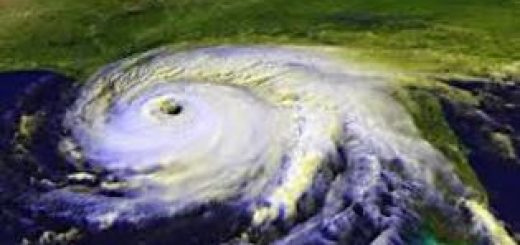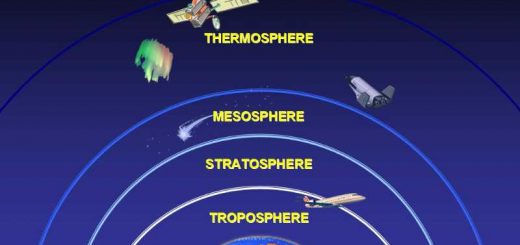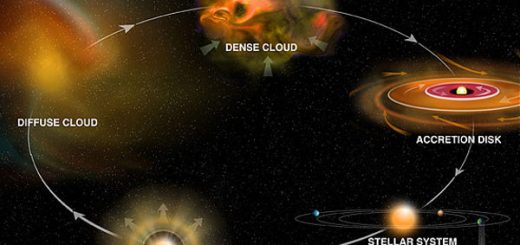Erosion of Ozone layer, Global warming phenomenon and Greenhouse effect
Chlorofluorocarbon compounds are dangerous to the environment because they cause erosion of the ozone layer and global warming phenomenon. There are two dangerous phenomena that have faced the Earth since the mid-twentieth (20th) century. These two phenomena are the Erosion of the ozone layer phenomenon (which occurs in the stratosphere). Global warming phenomenon (occurs in the troposphere).
Erosion of the Ozone layer phenomenon
Increasing the size of the ozone hole in September every year due to increasing the amount of pollutants which are emitted at this time every year.
Structure of the Ozone layer
The Ozone layer is composed of ozone gas (O3) which consists of three oxygen atoms.
Formation of the Ozone layer
Oxygen gas molecules (O2) absorbs ultraviolet (UV) radiation, Which causes the break down of its double covalent bond giving two free oxygen atoms (2O). Each free oxygen atom (O) combines with another oxygen molecule (O2) forming an ozone molecule (O3).
Location of the ozone layer
The ozone layer extends from 20 km to 40 km of height above sea level in the stratosphere layer because the stratosphere layer is the first layer in the atmosphere which contains a suitable amount of oxygen gas, that faces ultraviolet radiations emitted from the Sun. Ozone gas has a faint blue colour and a distinct smell. It can be observed near instruments that contain electric discharge pipes as in the cases of light photographic machines and TV sets.
The thickness of the ozone layer
The atmospheric pressure and temperature in the stratosphere layer are less than the atmospheric pressure and temperature at the sea level so, ozone gas spread forming a layer of 20 km thickness, The English scientist Dobson postulated that the thickness of the ozone layer is compressed into only 3 mm (millimetre).
If it were subjected to the ordinary temperature and normal atmospheric pressure which is known as (STP) [STP means standard temperature (0°C) and pressure (1013.25 Mb)]. Accordingly, Dobson assumed that the normal degree of ozone is 300 Dobson (where each 1mm thickness is equivalent to 100 Dobson). [The degree of ozone is measured by the Dobson unit.
Importance of the Ozone layer
To know the importance of the Ozone layer, we should know the types of ultraviolet (UV) rays and their ranges of penetration through the Ozone layer.
Types of ultraviolet rays
Three types of UV rays differ in wavelength and range of penetration through the ozone layer:
- Near UV’s: Wavelength (nanometre) is 315:400. Near UV’s penetrate the ozone layer by a percentage of 100%. It is useful for the life of living organisms.
- Medium UV’s: Wavelength (nanometre) is 280:315. Medium UV’s don’t penetrate the ozone layer by a percentage of 95%. It is harmful to the life of living organisms.
- Far UV’s: Wavelength (nanometre) is 100:280. Far UV’s don’t penetrate the ozone layer by a percentage of 100%. It is harmful to the life of living organisms.
The ozone layer acts as a protective shield for living organisms because it doesn’t allow penetration of all far and most of the medium ultraviolet radiations which have harmful chemical effects and threaten the life of living organisms. Ultraviolet radiation with a wavelength close to the visible light penetrates the atmosphere and reaches the Earth’s surface where it helps in the synthesis of vitamin (D) in the bodies of the newly born babies.
Erosion of the ozone layer
Since 1978, scientists have noticed that there was an erosion of the ozone layer above the south pole of the Earth. This is known as an ozone hole, the ozone hole is thinning or losing parts of the ozone layer above the south pole of the Earth. Ozone hole increases in September each year.
In fall 2001, the erosion of the ozone layer reached 20 × 106 km2 which equals twenty times the area of Egypt. In autumn 2008, it reached 27 × 106 km2 (i.e larger than the area of North America). We can determine the percentage of erosion of the ozone layer in a certain area as the following:
The degree of erosion of the ozone layer (in a certain area) = The normal degree of ozone (300 dobsons) – The degree of ozone in this area.
The percentage of erosion of the ozone layer (in a certain area) = (The degree of erosion of ozone layer ÷ The normal degree of ozone) × 100
Pollutants of the ozone layer
- Chlorofluorocarbon compounds (CFCs) are commercially known as Freon, which is used as a cooling substance in air conditioning sets, a propellant substance in aerosols, a floating substance in making foam backing, and a solvent substance for cleaning electric circuits slides.
- Methyl bromide gas is used as an insecticide to preserve stored agricultural crops.
- Halons are used in extinguishing fires.
- Nitrogen oxides are produced from the burning of fuel of ultrasound Concorde aeroplanes.
Protecting the ozone layer
To protect the ozone layer, We must reduce the use of chlorofluorocarbon compounds and find safer alternatives, Stopping manufacturing of the ultrasound Concorde aeroplanes because their exhausts contain nitrogen oxides that affect the ozone layer.
Factories should stop their production of foam boxes to reduce the use of chlorofluorocarbon compounds as they are used in making foam backing. Scientists ban using freon as a cooling material because freon causes erosion of the ozone layer and global warming phenomenon.
Global warming phenomenon
Researchers of IPCC (the Intergovernmental Panel on Climate Changes) that follows the UN (United Nations) showed that there is an increase in the average temperature of the Earth’s near-surface air, which is known as the global warming phenomenon. Global warming phenomenon is the continuous increase in the average temperature of the Earth’s near-surface air.
Reasons for the global warming phenomenon
Researches have also shown that the global warming phenomenon is caused by the greenhouse effect. The increase in the concentration of CO2 gas leads to an increase in temperature. The temperature of the planet Earth has been increasing since 1935 due to increasing greenhouse gases (especially CO2). The most important greenhouse gases:
- Carbon dioxide gas (CO2 ).
- Chlorofluorocarbon compounds (CFCs).
- Methane gas (CH4).
- Nitrous oxide (N2O).
- Water vapour (N2O).
The percentage of CO2 is increased in the atmosphere to 0.038 % in 2005 after it was 0.031 %. The reasons of increasing the percentage of greenhouse gases in the atmosphere are Fossil fuel burning, Cutting trees, and forests fires.
Interpretation of the greenhouse phenomenon
When the concentration of greenhouse gases increases in the atmosphere, the atmosphere plays the role of glass in the greenhouse as, In case of presence of the normal percentage of greenhouse gases in the troposphere, The atmosphere permits the visible light and short-waved rays emitted from the Sun to pass. The Earth and its components absorb these rays and reemit the radiation back in the form of infrared radiation.
When the rate of greenhouse gases increases in the troposphere, some of the infrared radiation cannot penetrate the atmosphere because it has a long wavelength, So it is kept trapped in the troposphere causing the rise in the planet Earth’s temperature which is known as the Greenhouse effect.
The greenhouse effect is the trapping of infrared radiation in the troposphere layer due to the increase in the percentage of greenhouse gases which cause an increase in the planet Earth’s temperature. The ultraviolet radiation has a chemical effect. while infrared radiation has a thermal effect.
Greenhouse gases are considered as a blessing that can be changed into a catastrophe, where without these gases, the temperature of the Earth would have decreased to -18°C and the increase in its concentration in the atmosphere will lead to environmental disasters.
The negative effects of the global warming phenomenon
Among the most dangerous consequences of raising the temperature of Earth planet due to global warming phenomenon are melting the snow of the two poles, and severe climate changes.
Melting the snow (ice) of both south and north poles
Melting the polar ice would increase the level of seas and oceans, which leads to:
- The disappearance of the coastal areas.
- The extinction of some polar animals such as the polar bear & seals.
Global warming phenomenon seriously affects the life on poles, because it causes melting of the snow of both south and north poles which would increase the level of sea and oceans.
Severe climate changes
Among these features is the repeated occurrence of
- Tropical hurricanes such as hurricane Katrina in 2005.
- Destructive floods
- Drought waves
- Forests fires
The erosion of the ozone layer and the protection from the ozone layer pollutants
The importance of the ozone layer and its structure
Ozone gas, Ozone therapy uses, advantages and disadvantages
Atmospheric layers & pressure, Troposphere, Stratosphere, Mesosphere & Thermosphere













